When it comes to cats, their fur plays a crucial role in their appearance, protection, and adaptation. From the regal lions of the savannah to our beloved domestic feline friends, cat fur varies in distribution, thickness, and patterns. Have you ever wondered what side of a cat has most fur? Let’s dive into the fascinating world of feline fur and explore the factors that contribute to their unique coat characteristics.
Cats belong to the family Felidae, which encompasses a wide range of species. From cheetahs and tigers to pumas and jaguars, each type of cat boasts its own distinct fur pattern. However, all cats share common features – a refined elegance, sharp retractable claws, and, of course, their beautiful coats.
Key Takeaways:
- Cat fur varies in distribution, thickness, and patterns among different species and individuals.
- Certain areas of a cat’s body, such as the back, sides, and tail, tend to have thicker fur.
- The growth pattern and density of a cat’s fur can differ from cat to cat.
- Cat coat patterns range from spots and stripes to solid colors, depending on the species.
- Fur thickness can be influenced by genetics, age, health, and environmental conditions.
Cat Fur Distribution and Thickness
The distribution and thickness of cat fur can vary among different species and individuals. Cats have fur all over their bodies, including their head, neck, torso, and limbs. The coat of a cat is thicker in certain areas such as the back, sides, and tail, compared to other areas like the belly and legs.
This variation in thickness helps cats regulate their body temperature and provides protection against the elements. For example, the thicker fur on their back and sides helps to insulate them during colder temperatures, while the lighter fur on their belly and legs allows for better airflow and prevents overheating.
The growth pattern of cat fur is influenced by genetics and can vary from cat to cat. Some cats may have denser fur than others, leading to variations in fur density distribution. This density can affect both the insulation properties and the appearance of the cat’s fur.
Understanding the distribution and thickness of cat fur is important for cat owners and enthusiasts. It helps in grooming and understanding how to properly care for their cat’s coat. It also contributes to the overall understanding of the evolutionary adaptations of cats and their ability to survive in different environments.
Cat Coat Patterns
Cats exhibit a wide range of coat patterns that contribute to their unique beauty and individuality. These patterns, such as spots, stripes, and rosettes, are genetically determined and can vary among different cat species and breeds.
Some cats, like the puma, jaguarundi, and lion, possess a uniform coloration without any patterns, which allows them to blend seamlessly into their natural habitats. For example:
- The puma, also known as the cougar or mountain lion, typically has a solid tan or brown coat that helps it camouflage in forested areas.
- The jaguarundi, a small wild cat native to the Americas, has a solid color coat that ranges from dark gray to reddish-brown, aiding its concealment in various habitats.
- African lions often exhibit a tawny coat with no clear patterns, enabling them to blend in with the grasslands and savannahs where they reside.
In contrast, other cat species and domestic breeds showcase stunning coat patterns that are distinct and captivating. These patterns can be desirable traits in certain breeds of domestic cats, elevating their aesthetic appeal. Cats with patterns like tabby, calico, tortoiseshell, and colorpoint are popular among cat enthusiasts.
The color and pattern of a cat’s coat serve various purposes, including camouflage, visual communication, and individual recognition among individuals of the same species. These intricate coat designs are not only visually compelling but also reflect the remarkable genetic diversity and adaptability of cats.
Factors Affecting Fur Thickness
The thickness of a cat’s fur can be influenced by various factors, including genetics, age, health, and environmental conditions. Cats of certain breeds may naturally have thicker fur due to specific genetic traits. Older cats tend to have thicker fur compared to younger cats, as the fur often becomes denser with age.
The overall health and nutrition of a cat can also affect the thickness and growth pattern of its fur. Proper nutrition, including a balanced diet with essential nutrients, contributes to healthy fur growth. Factors such as dehydration and nutrient deficiencies can lead to dry, brittle fur that appears thin or sparse.
Environmental conditions also play a role in determining fur thickness. Temperature and climate can impact a cat’s fur growth and density. In colder climates, cats may develop thicker fur coats as an adaptation to stay warm. Conversely, in warmer climates, cats may have thinner fur to help regulate body temperature.
Understanding these factors can help cat owners provide appropriate care and support for their feline friends. By ensuring a cat’s genetics, age, health, nutrition, and environment are well-maintained, pet owners can help promote optimal fur thickness and overall well-being.
Genetics
The genetics of a cat play a significant role in determining the thickness of its fur. Certain breeds are known for their thick, luxurious coats, while others have shorter or sparser fur. Breeds such as the Maine Coon and Persian cats are known for their dense, double-layered fur that provides insulation and protection.
Age
As cats age, their fur tends to become thicker. This is because the hair follicles go through a natural cycle of growth, rest, and shedding. Older cats often have more hair follicles in the active growth phase, resulting in a denser coat. However, it’s important to note that excessive shedding or hair loss in older cats may be a sign of underlying health issues, and veterinary attention should be sought.
Health and Nutrition
The overall health and nutrition of a cat can impact the thickness of its fur. Cats require a balanced diet that provides essential nutrients such as protein, fats, vitamins, and minerals to support healthy fur growth. When a cat’s diet lacks these essential nutrients, its fur may become dry, brittle, and thin. Regular veterinary check-ups and a high-quality diet can help maintain a cat’s fur health.
Environmental Conditions
The environment in which a cat lives can affect the thickness of its fur. Cats living in colder climates tend to have thicker fur to provide insulation and protection against the cold. On the other hand, cats in warmer climates may have thinner fur to help regulate body temperature and prevent overheating. Cats naturally adapt to their environment, and their fur thickness is a part of that adaptation.
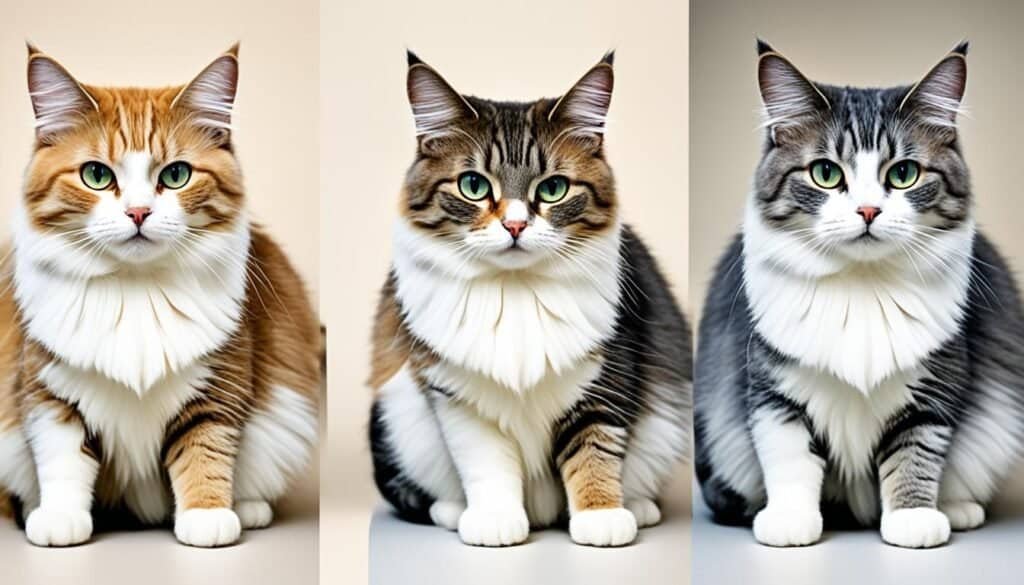
Cat Fur Comparisons with Other Animals
Cats have a unique fur density compared to other animals. While some animals may have thicker or denser fur, cats have adapted to their natural environment with a fur density that allows them to balance insulation and agility. The thickness and density of a cat’s fur help them regulate body temperature, protect their skin, and provide camouflage. However, it’s important to note that the fur density of cats can vary among different species and individuals.
Fast Facts about Cats
Cats are known for their agility and quick movements. They can reach impressive speeds, with some cats capable of running up to 30 miles per hour. This makes them faster than renowned human sprinters like Usain Bolt. Their speed and nimbleness allow them to chase and catch prey, making them highly efficient hunters.
Key Points:
- Cats can reach speeds of up to 30 miles per hour.
- They are faster than renowned human sprinters.
- Their speed and agility enable them to chase and catch prey.
Longevity of Cats
Cats are known for their relatively long lifespans, with some individuals reaching impressive ages. In fact, the oldest recorded cat lived to be an astonishing 38 years and 3 days old. This remarkable feline, named Creme Puff, resided in Austin, Texas, and enjoyed a long and fulfilling life.
While not all cats live as long as Creme Puff, it is not uncommon for cats to reach their 20s or even their early 30s. Several factors contribute to the longevity of cats, although the exact mechanisms are not fully understood.
Genetics play a significant role in determining a cat’s lifespan. Certain breeds tend to have longer lifespans than others, and it is thought that genetic factors influence various aspects of a cat’s health and longevity.
Diet is another crucial factor in a cat’s lifespan. Feeding your cat a balanced and nutritious diet that meets their specific dietary needs can help promote overall health and increase their chances of living a longer life. Providing a diet that is appropriate for their age and considering any specific health conditions they may have can also make a significant difference.
In addition to genetics and diet, general health and wellness play a vital role in a cat’s lifespan. Regular veterinary check-ups, vaccinations, and preventive care can help detect and treat any potential health issues early on, leading to improved outcomes and a longer life for your feline companion.
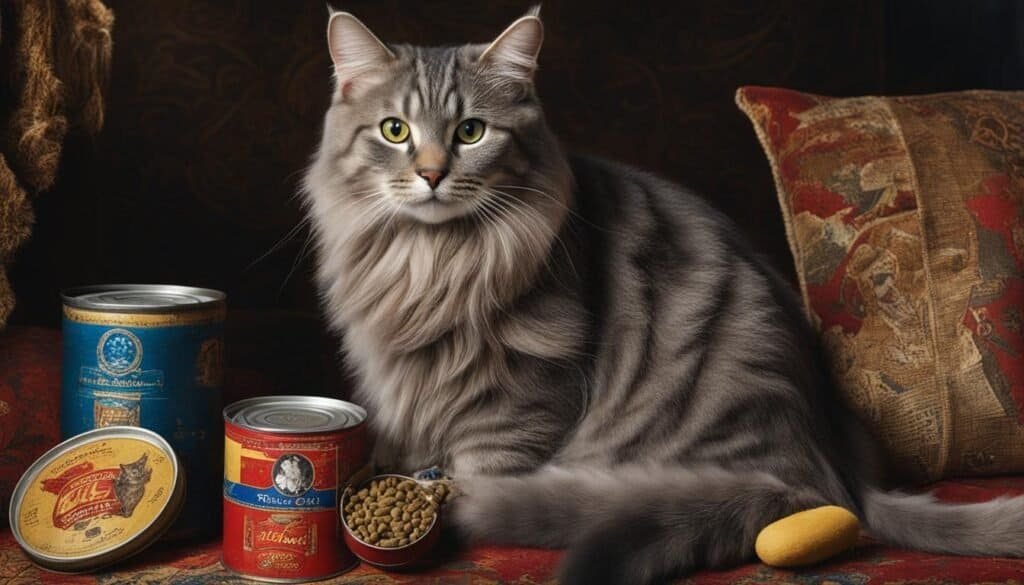
While there is no guaranteed formula for ensuring that your cat lives a long and healthy life, providing them with a loving and stimulating environment, proper nutrition, regular vet care, and plenty of affection can increase their odds of reaching their golden years.
Unique Cat Abilities and Records
Cats are truly remarkable creatures, showcasing a range of unique abilities and setting impressive records. From their purring prowess to their incredible agility, cats never fail to captivate us with their extraordinary talents.
Loudest Cat Purr
Did you know that the loudest recorded purr by a domestic cat reached an astounding 67.8 decibels? That’s equivalent to the sound of a shower!
Cat Tricks
Some cats are incredibly skilled at performing tricks, leaving us in awe of their intelligence and dexterity. In fact, the record for the most tricks performed by a cat in one minute stands at an impressive 24! These talented felines demonstrate their ability to learn and execute a variety of tricks, showcasing their unique bond with their human companions.
Cat Agility
Cats are renowned for their agility, making them exceptional climbers, jumpers, and balancers. With their flexible bodies and finely tuned reflexes, cats can navigate even the most treacherous landscapes with ease. Their natural grace and precision allow them to scale tall trees, leap across gaps, and maintain impeccable balance on narrow surfaces. Truly, cats are the epitome of agility!
Paw Preference in Cats
Cats, like humans, can exhibit a paw preference, which refers to their tendency to favor a particular paw over the other. Studies have shown that there is a difference in paw preference between male and female cats, with female cats tending to favor their right paw and male cats favoring their left paw.
This paw preference can be observed in various activities that cats engage in, such as grooming, playing, and hunting. For example, when grooming themselves, cats may predominantly use their preferred paw to clean their face and body. When playing with toys or hunting prey, cats may also exhibit a preference for using one paw more than the other.
Several factors can influence a cat’s paw preference. One possible factor is genetics, as certain traits related to paw preference may be inherited. Additionally, brain lateralization, which refers to the dominance of one hemisphere of the brain, can also play a role in determining a cat’s paw preference.
Understanding a cat’s paw preference can provide valuable insights into their behavior and preferences. It is important to note that not all cats have a strong paw preference, and some may even show ambidextrous behavior, using both paws equally.
Key Points:
- Cats can exhibit a paw preference, similar to left-handedness or right-handedness in humans.
- Female cats tend to favor their right paw, while male cats tend to favor their left paw.
- Paw preference can be observed in activities like grooming, playing, and hunting.
- Factors like genetics and brain lateralization may influence a cat’s paw preference.
- Not all cats have a strong paw preference, and some may exhibit ambidextrous behavior.
Cat Ear Anatomy and Function
Cats have highly specialized ear anatomy. Their ears serve multiple functions and play a vital role in their everyday lives. Let’s delve into the fascinating world of cat ears!
The inner structure of a cat’s ear comprises a complex system that allows them to detect sounds, communicate with other cats, and assess their surroundings. Cats have a total of 32 muscles in each ear, which give them remarkable control over ear movement.
The movement of cat ears is controlled by various muscle groups, including the rostral, caudal, dorsal, and ventral auricular muscles. These muscles enable cats to rotate their ears a remarkable 180 degrees, allowing them to pinpoint the source of sounds with remarkable precision.
Such ear mobility is crucial for cats, as it enhances their ability to hunt and survive in their natural environments. By rotating their ears, cats can accurately locate the position and distance of potential prey or potential threats. It also helps them orient themselves in their surroundings, ensuring they are aware of any potential dangers.
Moreover, cat ears are known to be highly sensitive, capable of picking up subtle sounds that may be imperceptible to human ears. This acute hearing is an essential adaptation for cats, allowing them to detect potential prey, avoid predators, and communicate with other cats effectively.
In conclusion, the specialized anatomy of cat ears, including the 32 muscles and remarkable mobility, enables cats to localize sounds and assess their environment with precision. Their acute hearing and ear movement play a crucial role in their survival and ability to thrive in various environments.
Cat Claw Characteristics
Having retractable claws is a distinctive feature of cats, setting them apart from other members of the Felidae family. This unique adaptation allows cats to silently stalk their prey and protect their claws from wear and tear by sheathing them in skin and fur when not in use. Cats possess a total of 18 digits and claws; five on each forefoot and four on each hind foot. These sharp and curved claws serve multiple purposes in a cat’s life, including hunting, climbing, marking territory, and self-defense.
As you can see in the image above, a cat’s claws are essential tools that enable them to engage in a range of activities. The retractable nature of their claws allows cats to maintain their sharpness and prevent them from getting blunted when not in use. This is particularly important for hunting, giving cats an advantage by ensuring their claws are always sharp and ready to seize their prey.
Conclusion
Cats are truly remarkable creatures, captivating us with their unique characteristics and abilities. From their varying fur distribution and thickness to their beautiful coat patterns, cats have an innate elegance that sets them apart. Their speed and agility make them incredibly skilled hunters, while their charming tricks and distinctive purring bring joy to our lives.
Behind their enchanting appearances, cats possess intricate anatomy that enables their survival in their natural environments. Their paws, with retractable claws, allow for silent movements and precise climbing. Their ears, equipped with specialized muscles, can rotate to detect sounds with incredible accuracy. And let’s not forget their remarkable claws, which serve multiple purposes in hunting, climbing, and marking territories.
Understanding these feline facts deepens our appreciation for the beauty and complexity of cats. Whether we marvel at their fur, witness their impressive abilities, or observe their fascinating anatomy, cats continue to captivate us with their enigmatic nature. So next time you encounter a cat, take a moment to admire the intricacies of their fur, the gracefulness of their movements, and the wonders of their well-adapted anatomy.
FAQ
What side of a cat has most fur?
What factors affect cat fur thickness?
What is the pattern of a cat’s coat?
How does a cat’s fur density compare to other animals?
How fast can a cat run?
How long can a cat live?
What are some unique abilities and records of cats?
Do cats have a paw preference?
What is the anatomy and function of a cat’s ears?
What are the characteristics of cat claws?
In conclusion, what are some fascinating feline facts?
Last modified: March 4, 2024

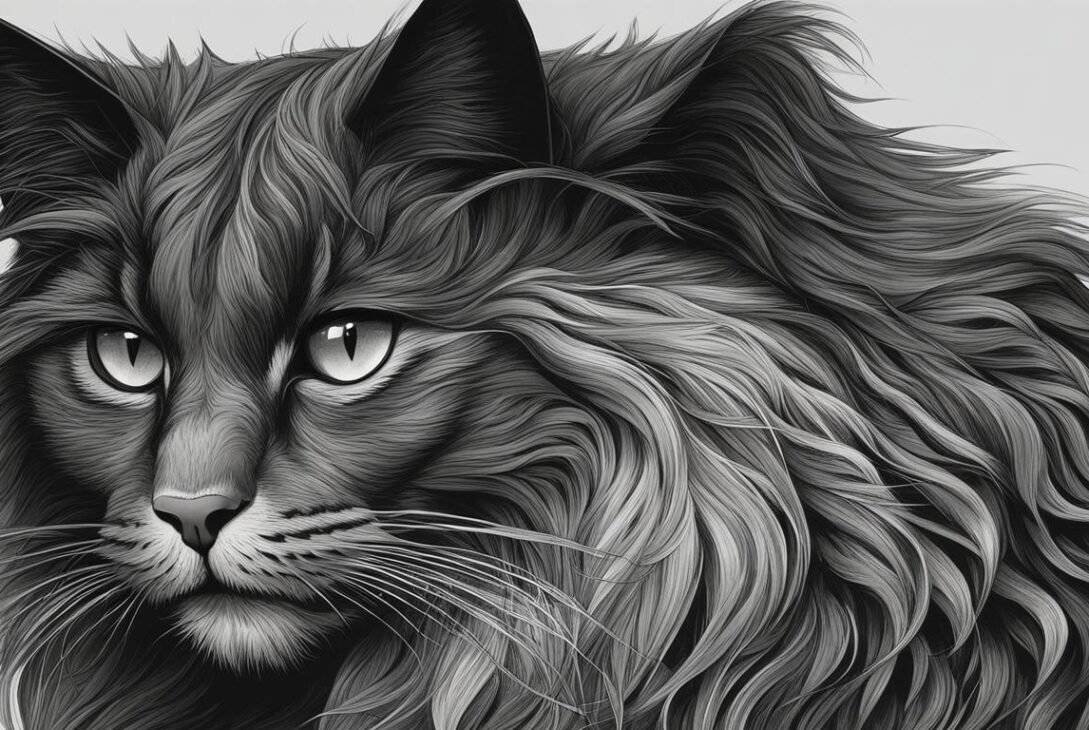
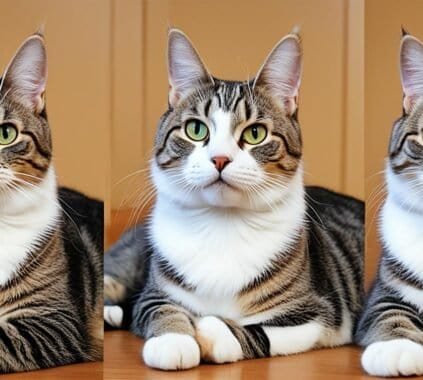
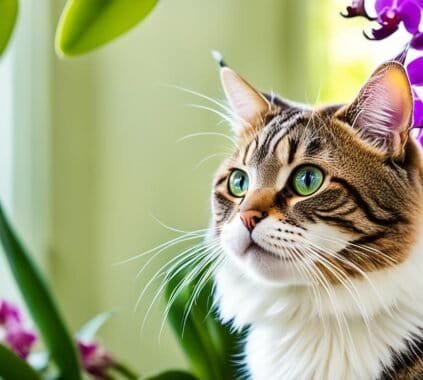
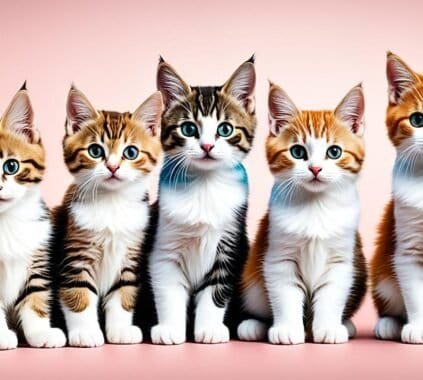









[…] to their postures, facial expressions, and the position of their ears, tail, and whiskers, cat owners can gain valuable insights into their feline […]
[…] Shorthair cats have a playful side and can entertain themselves with toys. They are known for their independence and adaptability, […]
[…] all began with Jean Mill, an enthusiastic cat breeder from Arizona who had a vision of creating a feline companion that possessed both the exotic appearance of the Asian leopard cat and the gentle […]
[…] cats may not have fur, but their hairless skin still requires regular grooming to maintain its health. Despite their […]
[…] its incredible intelligence and majestic long-haired coat. Originating from Maine, USA, this regal feline has found its way into the hearts and homes of cat enthusiasts worldwide, including the […]